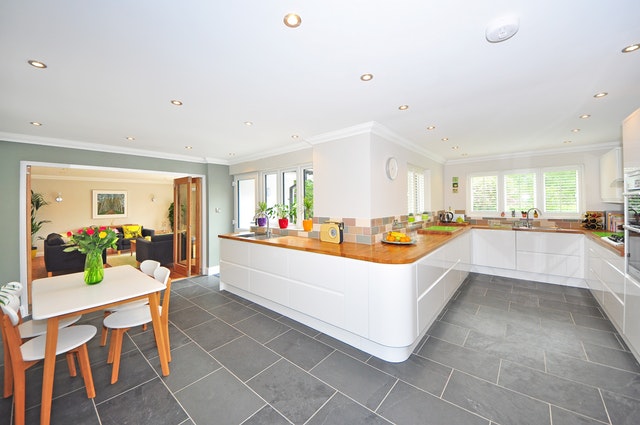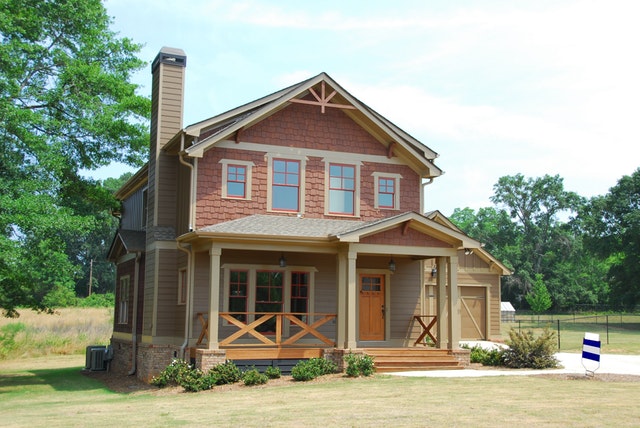 Urban and suburban life offers wonderful conveniences and cultural benefits. But a downside that many families are experiencing is the pervasive use of electronics and disconnectedness from nature.
Urban and suburban life offers wonderful conveniences and cultural benefits. But a downside that many families are experiencing is the pervasive use of electronics and disconnectedness from nature.
These lifestyle deficiencies have increased the popularity of yoga and meditation and the practice of mindfulness is topping the covers of national magazines. Everyday mothers and fathers are also working hard to engage their children in outdoor activities and nature. These things require an ongoing effort on top of already packed schedules. That’s why mindful home designs that bring nature into your living space have been trending.
Origins Of Mindful Home Design
There are plenty of home fads that come and go. Some may remember the intense oranges of the 1970s or tiles that covered over lush hardwood floors. Yikes.
One of the founders of the nature-infused home movement was America’s beloved architect Frank Lloyd Wright. His acclaimed Fallingwater marvel was built in 1935 directly on top of a waterfall. The design incorporated natural stone and timber in a way that brought the outdoors living experience into the home. The southwest Pennsylvania wonder forms the basis for the recent trend to incorporate natural elements into living spaces.
The idea that connectedness to nature improves mindfulness has been supported by a wealth of research. The Japanese use “forest bathing” as a way to feed the mind and spirit. The basic idea goes hand in hand with Wright’s architectural thinking that human senses benefit from a direct and discernable connection to nature.
Studies have shown that patients recovering from illness or surgery demonstrate marked health improvement through natural immersion. But the practical question is: how does this trend benefit everyday homeowners?
Natural Homes Improve Mindfulness
It’s not practical to bring an entire forest into your home. But creating semi open-air spaces go a long way to enhancing an outdoor feeling.
Many homes are including semi-enclosed spaces constructed from natural timbers, stone flooring and rich plant life that emulate the positive effects nature has on the human psyche. Although subtle, they help reduce the nature deficiency experienced by many tech-oriented adults and children.
By working with materials that further the experiences of nature’s sights, sounds, touches, smells and even tastes in some cases, living environments are bringing a touch of the natural world home.
When considering a remodeling project or new construction, consider looking at the ideas of Frank Lloyd Wright’s Fallingwater project and contemporary home designers about infusing nature into your everyday life.
If this housing type is appealing, be sure to let your trusted real estate professional know so that they can help you find just the right home for you.
 Home improvements are key investments when it comes to quality of life and property value. While decks, solar panels and smart technologies are trendy options, installing a home generator may be even more valuable. That’s because backup generators not only improve market value, they also protect you and your home during severe weather incidents.
Home improvements are key investments when it comes to quality of life and property value. While decks, solar panels and smart technologies are trendy options, installing a home generator may be even more valuable. That’s because backup generators not only improve market value, they also protect you and your home during severe weather incidents. Color psychology is not an exact science, but there are basic principles that marketing pros use to sell everything from greeting cards to automobiles. Much of it has to do with color. Yes, the colors you put on your walls, or on your front door, can help clinch a home sale!
Color psychology is not an exact science, but there are basic principles that marketing pros use to sell everything from greeting cards to automobiles. Much of it has to do with color. Yes, the colors you put on your walls, or on your front door, can help clinch a home sale! Many homeowners are looking for ways to maximize on their investment. One idea that is gaining popularity is a space set aside for aging parents known as an In-law apartments. These additions are living spaces that can set a property apart from others on the real estate market.
Many homeowners are looking for ways to maximize on their investment. One idea that is gaining popularity is a space set aside for aging parents known as an In-law apartments. These additions are living spaces that can set a property apart from others on the real estate market. Not every buyer may want a fixer-upper. While your home for sale doesn’t need to be turn-key or move-in-ready, there are certain fixes that are important to many buyers and that can help make the sale.
Not every buyer may want a fixer-upper. While your home for sale doesn’t need to be turn-key or move-in-ready, there are certain fixes that are important to many buyers and that can help make the sale. It’s no secret that we’re in the midst of a hot seller’s real estate market. That means that good homes are going fast, usually at or above list price. This is largely the result of low inventory, where good homes are scarce, keeping competition for them – and listing prices – high.
It’s no secret that we’re in the midst of a hot seller’s real estate market. That means that good homes are going fast, usually at or above list price. This is largely the result of low inventory, where good homes are scarce, keeping competition for them – and listing prices – high.